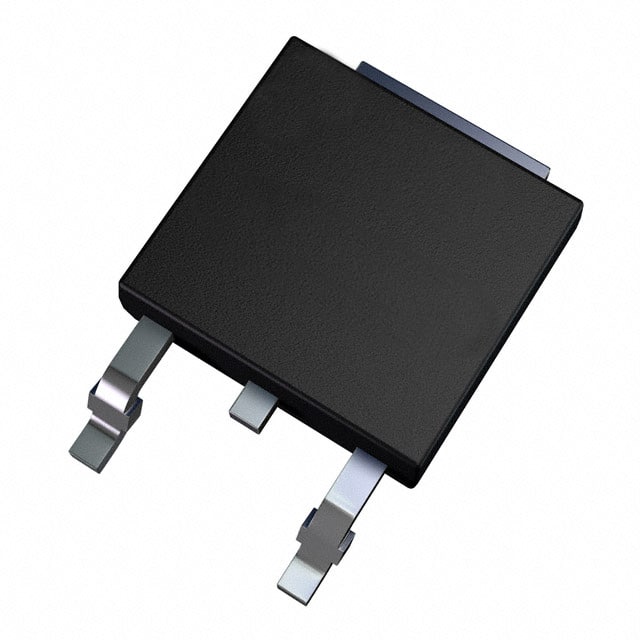2SB1201S-TL-E
Product Category: Transistor
Basic Information Overview: - Category: Bipolar Junction Transistor (BJT) - Use: Amplification and switching in electronic circuits - Characteristics: High current capability, low saturation voltage, fast switching speed - Package: SOT-89 - Essence: NPN silicon epitaxial planar transistor - Packaging/Quantity: Tape & Reel, 3000 units per reel
Specifications: - Collector-Base Voltage (VCBO): 50V - Collector-Emitter Voltage (VCEO): 45V - Emitter-Base Voltage (VEBO): 5V - Collector Current (IC): 3A - Power Dissipation (PD): 2W - Transition Frequency (fT): 150MHz - Operating Temperature Range: -55°C to 150°C
Detailed Pin Configuration: - Pin 1 (Emitter) - Pin 2 (Base) - Pin 3 (Collector)
Functional Features: - High current gain - Low noise - Suitable for audio amplification and general switching applications
Advantages: - Fast switching speed - Low saturation voltage - High current capability
Disadvantages: - Limited power dissipation - Sensitivity to temperature variations
Working Principles: The 2SB1201S-TL-E operates based on the principles of bipolar junction transistors, utilizing the flow of charge carriers to amplify or switch electronic signals.
Detailed Application Field Plans: - Audio amplifiers - Switching circuits - Motor control systems - LED drivers
Detailed and Complete Alternative Models: - 2SB1201-TL-E - 2SB1201S-TL-H - 2N3904 - BC547
This comprehensive entry provides an in-depth understanding of the 2SB1201S-TL-E transistor, covering its specifications, pin configuration, functional features, advantages, disadvantages, working principles, application field plans, and alternative models.
Lista 10 Vanliga frågor och svar relaterade till tillämpningen av 2SB1201S-TL-E i tekniska lösningar
What is the maximum collector current of 2SB1201S-TL-E?
- The maximum collector current of 2SB1201S-TL-E is 3A.
What is the typical collector-emitter saturation voltage of 2SB1201S-TL-E?
- The typical collector-emitter saturation voltage of 2SB1201S-TL-E is 0.5V.
What is the power dissipation of 2SB1201S-TL-E?
- The power dissipation of 2SB1201S-TL-E is 1W.
What are the typical applications for 2SB1201S-TL-E?
- 2SB1201S-TL-E is commonly used in audio amplifiers, power management circuits, and general switching applications.
What is the maximum operating temperature of 2SB1201S-TL-E?
- The maximum operating temperature of 2SB1201S-TL-E is 150°C.
Does 2SB1201S-TL-E require a heat sink for operation?
- It is recommended to use a heat sink when operating 2SB1201S-TL-E near its maximum power dissipation to ensure proper thermal management.
What is the typical gain (hFE) of 2SB1201S-TL-E?
- The typical gain (hFE) of 2SB1201S-TL-E is 60 to 320.
Is 2SB1201S-TL-E suitable for high-frequency applications?
- 2SB1201S-TL-E is not specifically designed for high-frequency applications but can be used in low to moderate frequency circuits.
What are the recommended storage conditions for 2SB1201S-TL-E?
- It is recommended to store 2SB1201S-TL-E in a dry environment at temperatures between -55°C to 150°C.
Can 2SB1201S-TL-E be used in automotive applications?
- Yes, 2SB1201S-TL-E can be used in automotive applications where its electrical and thermal characteristics meet the requirements.


